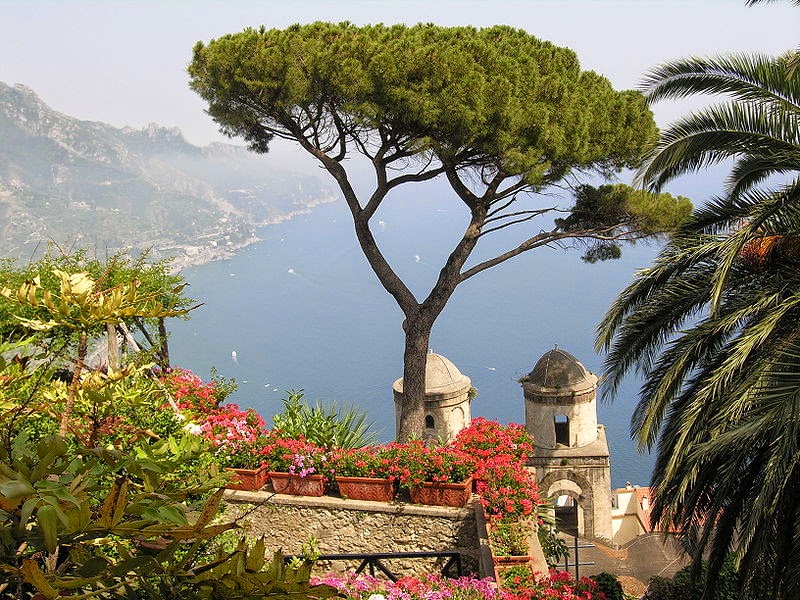Executive summary by darmansjah
Center of the town
The town has served historically as a destination for
artists, musicians, and writers, including Giovanni Boccaccio, Richard Wagner,
Edvard Grieg, M. C. Escher, Virginia Woolf, Greta Garbo, Gore Vidal, André
Gide, Joan Mirò, Truman Capote, Tennessee Williams, Graham Greene, Jacqueline
Kennedy, Leonard Bernstein and Sara Teasdale (who mentioned it in her prefatory
dedication in Love Songs).
Every year in the summer months, the "Ravello
Festival" takes place. It began in 1953 in honour of Richard Wagner, who
signed the guestbook of his local hotel with the words "The magical garden
of Klingsor is found" suggesting that it was in Ravello that the composer
found the inspiration for his Parsifal.
There is an ancient legend, still recounted by tour guides
in Salerno and Amalfi, that it was to Ravello, with its breathtaking view of
the Mediterranean and the dramatic Amalfi coastline, that Satan transported
Jesus during His second temptation to show the beauty of the world's kingdoms.
(Luke 4: 5-8)
It is possible that George Eliot was inspired by the name of
Ravello when writing her 19th century novel Silas Marner, set in the fictional
West Midlands village of Raveloe.
In 1996, Ravello was listed as a UNESCO World Heritage Site.
Ravello is a town and comune situated above the Amalfi Coast in the province of
Salerno, Campania, southern Italy, with approximately 2,500 inhabitants. It is
a popular tourist destination due to its scenic beauty.
Main Sights
The Duomo (Cathedral) of Ravello: the central nave contains
the "Pulpit of the Gospels", on the right of the central nave,
created in 1272 by Nicolò di Bartolomeo from Foggia.
Duomo square
Villa Rufolo (1270), built by Nicola Rufolo, one of the
richest Patricians of Ravello, on a ledge and it has become a famous attraction
for thousands of visitors. The villa was mentioned by Giovanni Boccaccio in his
Decameron and it is the place where Richard Wagner in 1880 was inspired for the
stage design of his opera Parsifal.
Villa Cimbrone, famous for its "Terrace of the
Infinite".
The church of San Giovanni del Toro (Saint John of the Bull)
dating to before the year 1000. The church contains the Bove pulpit, dateable
to 1200–1230, incorporated as mosaic fragments Raqqa bacini.
The small church of Santa Maria a Gradillo (11th century).
It has a basilica plan, with three apses.
Sanctuary of Sts. Cosmas and Damian (14th century)
Two famous gardens:
Villa Cimbrone
Amalfi Coast: the amalfi coast, or Costiera Amalfitana in
Italian, is a stretch of coastline on the southern side of the Sorrentine
Peninsula of Italy, extending from Positano in the west to Vietri sul Mare in
the east.
View of the sea from Villa Rufolo





No comments:
Post a Comment